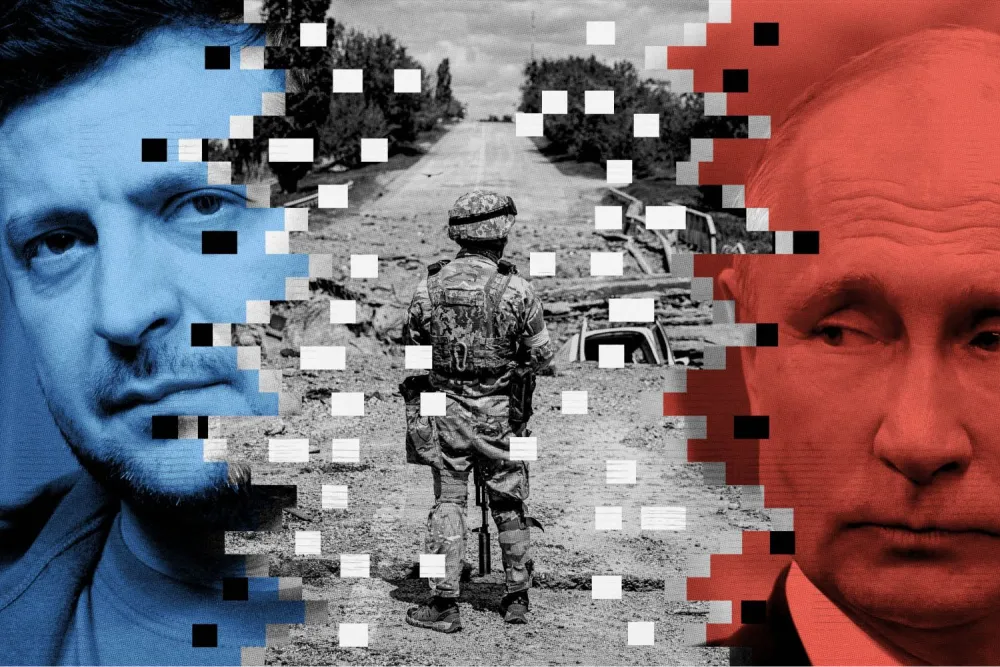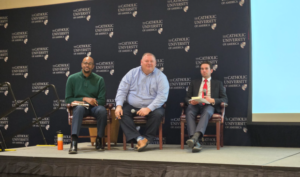Disinformation Still Plays a Big Role for Russia’s Invasion of Ukraine

Image Courtesy of Foreign Policy
During our elections in the last few years, one of the most hotly debated topics has been the stance of the United States in regards to the Russian invasion of Ukraine. While technically beginning in 2014, the conflict expanded into a full scale war between the two nations in February of 2022, invoking mass condemnation from the international community. One of the biggest among these critics has been the United States, as our leading role in NATO mandates that we ensure the protection of the alliance’s eastern flank. Furthermore, the Budapest Memorandum has guaranteed American support for Ukraine in case of a threat to its sovereignty (Russia, another signatory to this treaty, has notably disregarded it). In this realm, the United States has given roughly 175 billion dollars in both direct and indirect aid to Ukraine over the last two years, and as such it has become one of the largest and most vitriolic subjects discussed among American foreign policy.
Due to this, it is imperative that both the legislators and policymakers in our government, as well as the common population of the United States which elects and appoints them, be well informed on the topic, not only because the conflict is a significant financial commitment for the United States, but also because US aid directly effects Ukraine’s ability to fight for their independence.
The Russo-Ukrainian War is unprecedented in a number of ways, but is most notable for being the largest European land war between two sovereign states since World War II. Thus, the amount of resources that both sides can marshal is far beyond many of the smaller scale civil conflicts and internal struggles that have come to define 21st century warfare. One “front” that both sides have dedicated a substantial amount of resources to is the digital realm, where the vast majority of modern communications is held.
Russia in particular has utilized disinformation in a variety of ways to misinform both Ukraine and its allies, using a multi-pronged strategy of social media disinformation, fake “imitation” news stations that mimic legitimate organizations, and direct state propaganda outlets like Zvezda TV. Through such avenues, Russia intends to delegitimize Ukraine and their fight against Russia, making claims that the country is full of neonazis to serving as a host for US biological weapons plants.
Nowhere have such ideas become more prevalent than within the United States, with its reach ranging from the average person scrolling on tiktok to members of the House of Representatives. Americans -especially those with widespread influence- espousing false information is not only directly harmful to Ukraine and their efforts in the war, but also works to perpetuate an environment of confusion and uncertainty among information in general, blurring the line between true and false as such ideas become widespread, and enabling other sources of misinformation to potentially make their entrance.
Such a media environment is directly harmful for the state of democracy within the United States, and both the government and many independent organizations have taken steps to try and alleviate such problems. Congress has introduced various pieces of legislation to attempt to combat this widespread disinformation, such as the Educating Against Misinformation and Disinformation Act, or HR 6971. Those who would wish to see this bill fully passed and implemented should contact their local House representative through email or letter.
In the meanwhile, there are many other ways that one can educate themselves to be aware of false information, and many NGOs offer tips and courses on spotting false news, such as the News Literacy Organization. Through education and government reform, Americans will be able to more effectively deal with false information, and thus can come to their own conclusions for America’s foreign policy.







